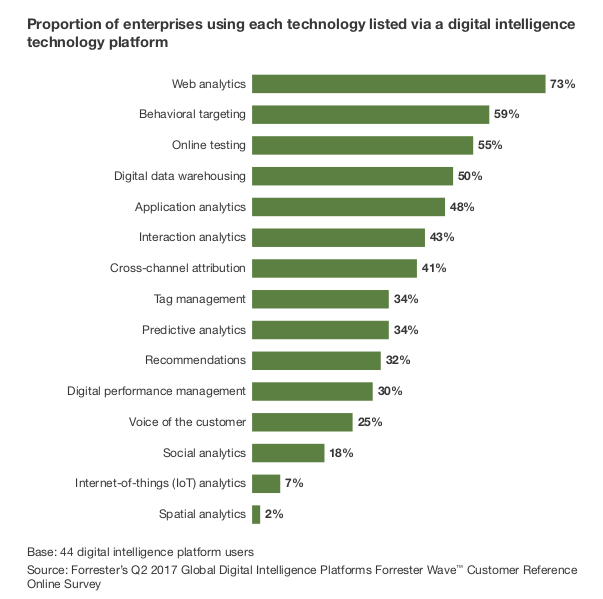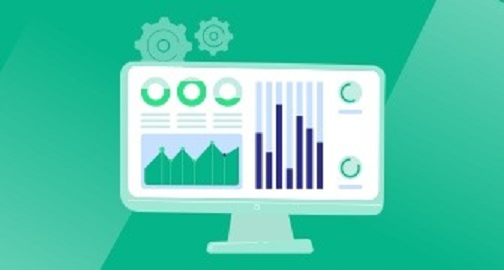Web Analytics is Essential for Digital Success
[Free Takeaway Included – 17 Must-Use Analytical Techniques across Marketing Life Stages]
Back in the 1990s when the World Wide Web was born, if you happened to be one of the 600 websites and wanted to measure your website traffic, you had to dig deep into your server logs. Good luck to any non-technical person trying to make sense out of thousands of lines in those never-ending logs!
Then came around the glorified hit counters that answered the basic question of “how many people are looking at my website”?
Gradually, with the growing need for in-depth analytics tools, the advent of technology changed everything and paved the way for the massive industry of web analytics as we know it today.
The Dawn of Modern Web Analytics
The sophistication of browsers, products and industries prompted innovation. It was not long before page views were replaced by more informative web analytics metrics such as traffic sources, conversion rate, etc.
And, best of all these powerful insights became instantly accessible to all in your team, making it real easy to interpret how users engage with your website and leverage these insights to drive satisfaction, engagement and conversion.
Fast forward to today, web analytics has evolved into a powerful tool to not just understand what’s happening within your website, but also provide answers to ‘why’ and ‘how’ they happen.
Apart from conventional web analytics that measure high-level aspects of user-website interactions, several other behavioural web analytics like heatmaps, click tracking, user experience analysis have come into play to dive down to the granular details of website performance.
The Role of Web Analytics in Marketing
Web analytics is a technique used for the collection, measurement, analysis and reporting of data pertaining to the use of websites and web applications.
According to Hotjar’s State of Web Analytics Report 2021, around 74% of companies in a survey of 2000 plus analytics professionals use Google Analytics as a basic tool to measure their web applications. This comes as no surprise since Google is by far the market leader in the web analytics landscape that is used at least by 30 million websites, according to BuiltWith.
However, you may need more than Google Analytics in your web analytics stack to get the complete picture of your website viewers and measure everything you want to know to improve performance.
Some of the most important things web analytics can tell you include the following:
- How do people find your website and where does traffic come from?
- What do they do after they land on your website?
- What devices, browsers and platforms viewers are using to view your site?
- Which pages on your site do people engage with the most?
- When and how are they engaging with the content on your site?
- Why do some people buy and others drop off?
- What can you do to get more of your visitors to view pages and take action?
Web analytics has been growing into a very comprehensive technology that can extensively track, analyze and report website data. Therefore you might need more than one tool or a comprehensive package in your stack to gain deep customer insights and drive effective marketing decisions.
Are you just getting started with your analytical journey? Here’s a free download of 17 must-use analytical techniques.
Why Web Analytics is Critical for Businesses in Today’s Digital Age?
Marketers today have a dizzying array of online and offline channels to manage. But among all channels, the website serves as a junction point where all channels converge. Without a doubt, all roads lead through the website.

Since web pages are a critical part of customer engagement, web analytics are necessary to managing your website and delivering the best user experience.
Here are some reasons why web analytics are a must-have for brands to survive and thrive in the digital terrain:
- Modern web analytics form the core of the martech solutions stack – Web analytics used in tandem with other digital analytical tools including cross-channel analytics, social listening tools can aid with accurate targeting, personalization and cross-channel attribution.
- Web analytics adoption remains the most predominant digital intelligence technique – Almost three-quarters of respondents in Forrester’s Q2 2017 Global Digital Intelligence Online Survey used web analytics.
- Web engagement is a vital driver of business success – The majority of active Internet users still interact via browsers, which remains the most important digital marketing channel.
While web analytics has been around since the start of websites themselves, it has evolved and come a long way in alignment with changing customer expectations, business dynamics and digital transformation.
Web analytics will continue to evolve and go further but will remain the crux of marketing analytics and data-driven insights.
If you have still not unleashed the complete potential of web analytics, it’s best to hire a web analytics agency to steer you in the right direction and help derive actionable insights that matter for your business.
What do you think about web analytics and its role in your marketing efforts? Drop your comments below or share them with #Xerago at [email protected].


